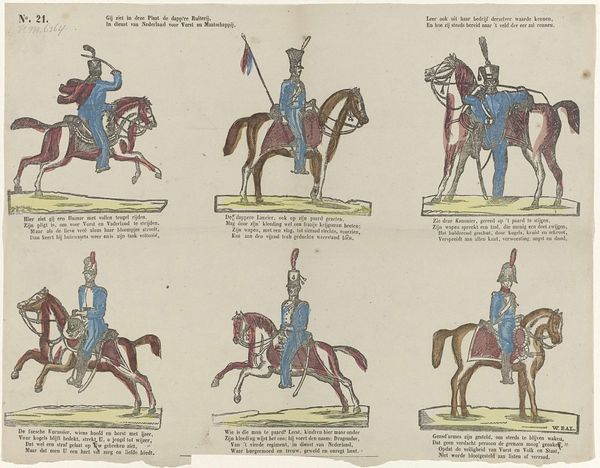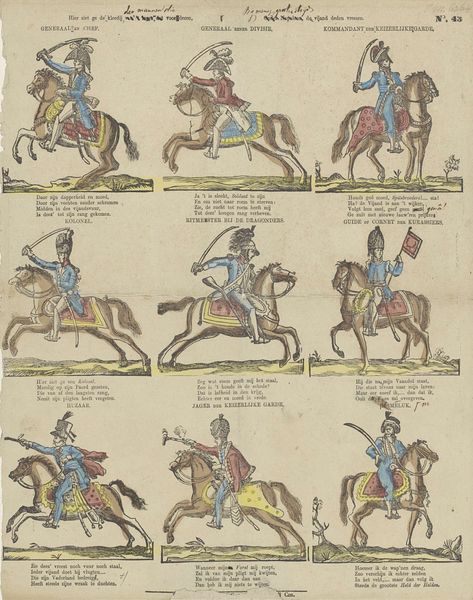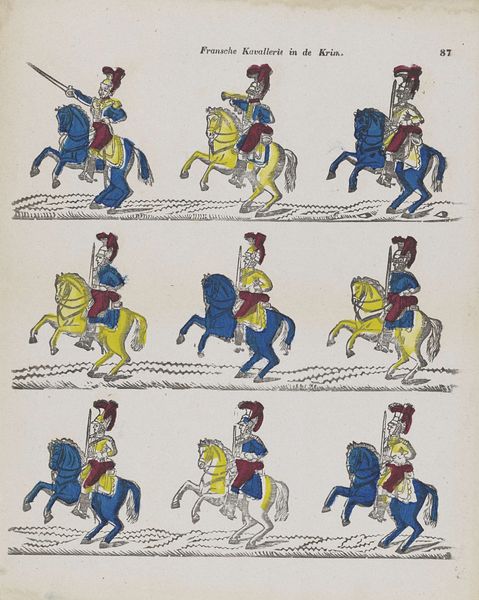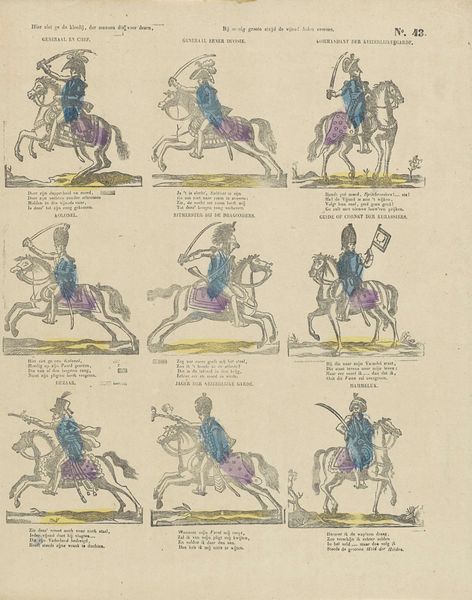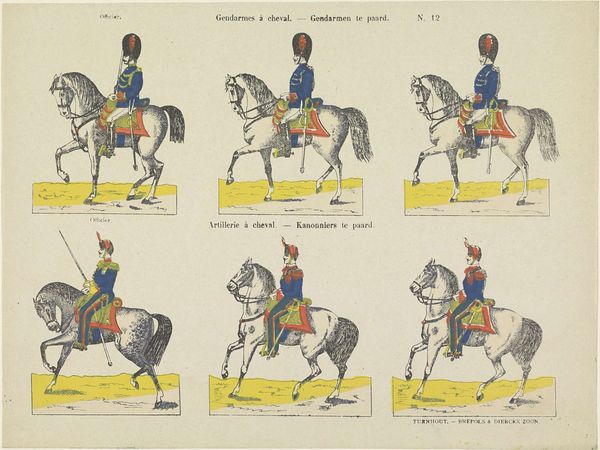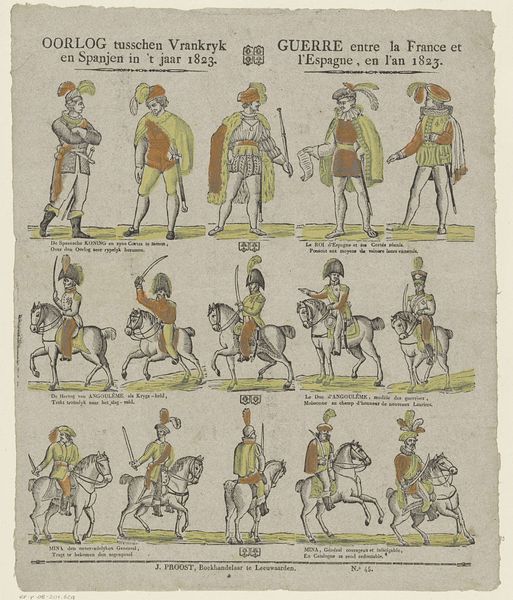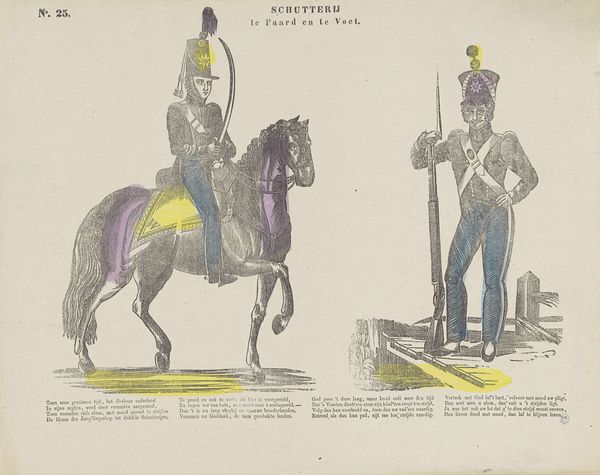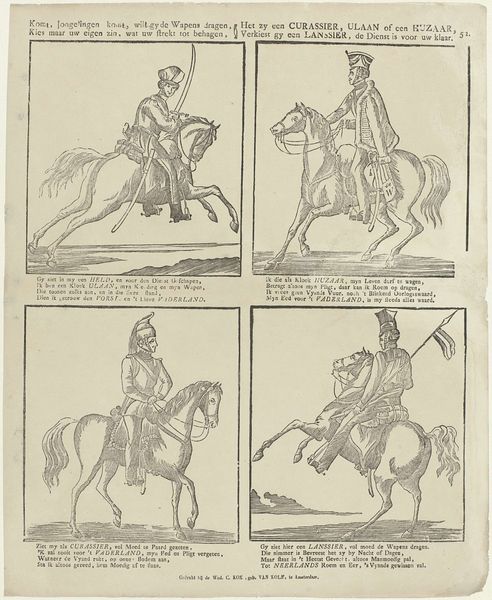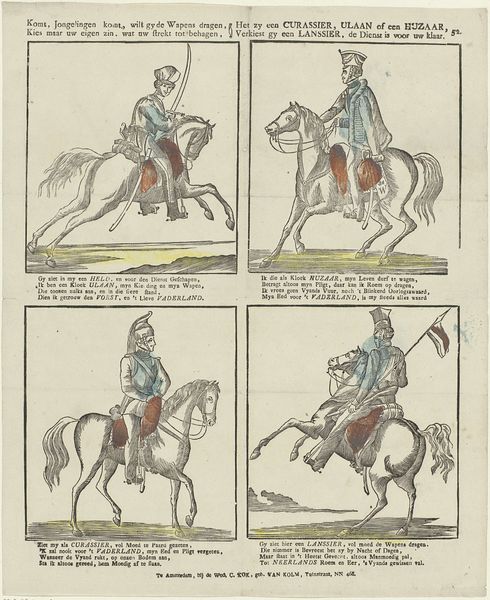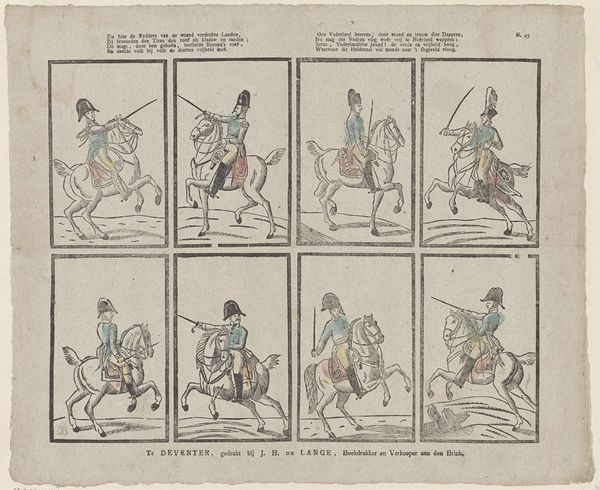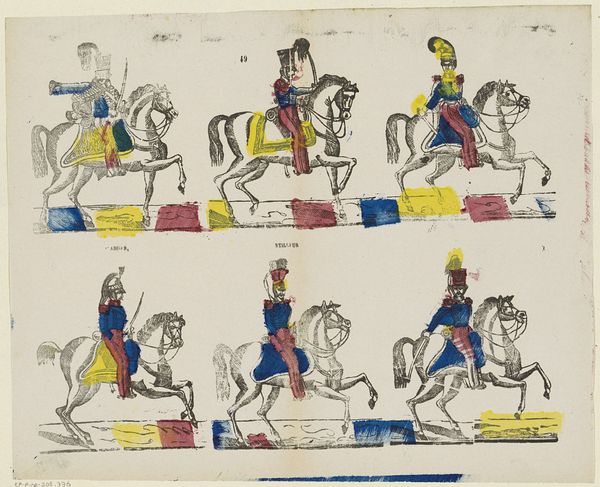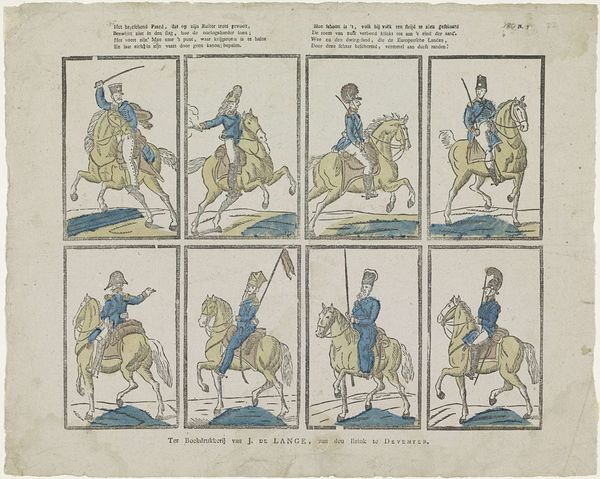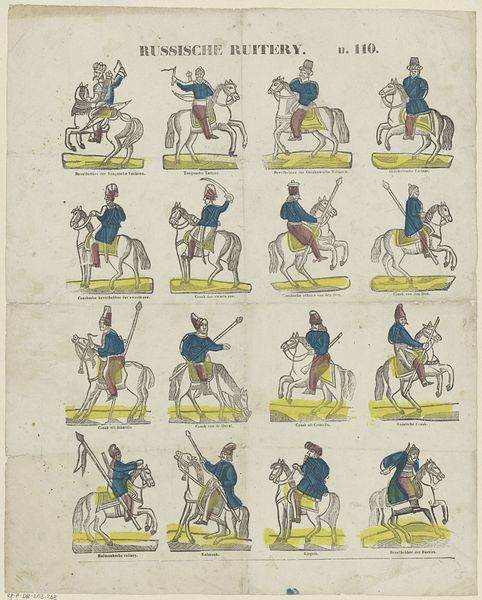
Gij ziet in deze plaat de dappre ruiterij, / In dienst van Nederland voor vorst en maatschappij. / Leer ook uit haar bedrijf derzelver waarde kennen, / En hoe zij steeds bereid naar 't veld der eer zal rennen 1850 - 1870
0:00
0:00
lithograph, print
#
narrative-art
#
lithograph
# print
#
landscape
#
figuration
#
genre-painting
#
history-painting
Dimensions: height 295 mm, width 370 mm
Copyright: Rijks Museum: Open Domain
Curator: This lithograph from the Rijksmuseum, dating roughly between 1850 and 1870, presents several figures identified as members of the Dutch cavalry. It’s by Willem Bal, and it is titled by a rather long winded, but fitting phrase "Gij ziet in deze plaat de dappre ruiterij, / In dienst van Nederland voor vorst en maatschappij. / Leer ook uit haar bedrijf derzelver waarde kennen, / En hoe zij steeds bereid naar 't veld der eer zal rennen.” Editor: My initial impression is that there’s a slightly detached, almost toy-like quality. They remind me of paper soldiers one might find in a child's game. Their construction, being a lithograph print, further enhances this association. Curator: Indeed, the printmaking process emphasizes its existence as a multiple, rather than a unique artistic object. The choice of lithography suggests a democratizing impulse, allowing for broader dissemination and consumption. I would suggest this fits the historical period nicely; lithography allowed cheaper reproduction that facilitated more prints to be distributed wider among society. Editor: Absolutely, the seriality of lithography challenges the aura of the unique artwork. And the verses underneath each figure seem to suggest we consider the virtue and service of each position within the Dutch army and it's structure. The accessibility of the images and accompanying text could also foster a sense of national identity. How does the representation of labor play into this national narrative? Curator: That's where things get interesting for me: labor of printmaking, the labour and role of the Dutch cavalry depicted, the labor they expect of civilians; how can the study of this medium enhance our grasp of 19th century visual and material culture and contribute to how social class and hierarchies solidify in The Netherlands? Editor: It’s not just about looking at who is depicted; it's equally important to question why such imagery was being produced, and what its potential impact might have been, given what we know now about social hierarchies at that time. Curator: Considering this from a material perspective also invites scrutiny of its place within the domestic sphere, it allows one to explore this artwork as something ordinary and part of daily life rather than grand painting exhibited at a formal space, it speaks to a quiet form of production meant to educate. Editor: In delving into its layers, it has indeed proven to be anything but detached—an entanglement of medium, labor, and ideology.
Comments
No comments
Be the first to comment and join the conversation on the ultimate creative platform.
